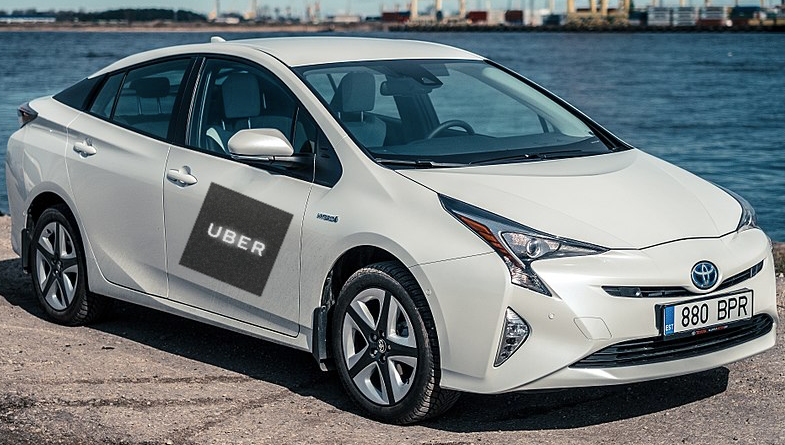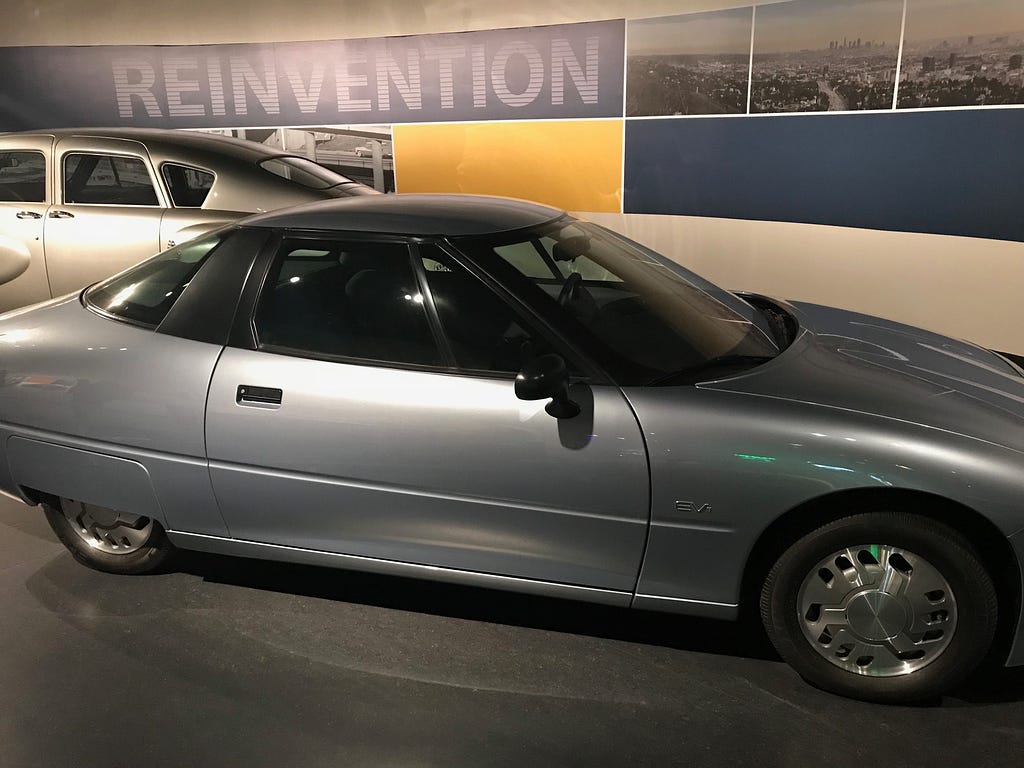Latest news about Bitcoin and all cryptocurrencies. Your daily crypto news habit.
 Credit: Kārlis Dambrāns (via WikiMedia Commons).
Credit: Kārlis Dambrāns (via WikiMedia Commons).
It’s been a busy few weeks for those following Uber’s evolving corporate strategy. The $70-billion ridesharing company made two major announcements recently: a strategic pivot to e-bikes and scooters focused on mobility in the urban core (possibly at the expense of Uber’s traditional car-oriented business), and a $500 million investment by Toyota to help support Uber’s development of autonomous vehicles.
Although e-bikes and driverless cars don’t seem to have much to do with each other, the two strategic moves are closely linked. Understanding their connection reveals a lot about the way that Uber CEO Dara Khosrowshahi is thinking about the future of mobility. As a consequence, Uber’s autonomous vehicles development program has finally matured into something to be taken seriously.
The business logic of Uber developing AVs seemed like a no-brainer: driverless Ubers could leverage the vast existing rideshare customer base and provide a taxi-like service that was very similar to what people were familiar with, while slashing costs by eliminating driver salaries.
Uber’s pursuit of autonomous vehicles (AVs) started under the leadership of former CEO Travis Kalanick in 2015. He set the tone for a highly aggressive strategy, poaching almost 50 robotics researchers from Carnegie Mellon University and later standing up AV tests in Pittsburgh, Phoenix, Toronto, and the San Francisco Bay Area. The program was accelerated by the 2016 purchase of Otto, a self-driving truck startup founded by former Google employee Anthony Levandowski. As part of the acquisition, Levandowski took the helm of the Uber AV program, and echoed Kalanick’s sense of urgency, arguing that “this is a race and we need to win […] Second place is first loser”.
The business logic of Uber developing AVs seemed like a no-brainer: driverless Ubers could leverage the vast existing rideshare customer base and provide a taxi-like service that was very similar to what people were familiar with, while slashing costs by eliminating driver salaries. Uber bet heavily on this strategy, spending $750 million on it in 2017.
But the strategy was dogged with problems. In 2016, Uber began testing AVs in San Francisco without a California DMV permit, arguing that its vehicles weren’t technically covered by the law. The state disagreed, and Uber shut down its program, moving to Arizona. (Dozens of other companies registered for the permits, including Google/Waymo, Tesla, BMW and GM Cruise.) A lawsuit by Google/Waymo alleging that Uber had stolen plans for lidar (a key AV sensor component) as part of the Otto acquisition was finally settled in February for $245 million. And in March this year an autonomous Uber test vehicle struck and killed a pedestrian in Tempe, AZ in the first known pedestrian fatality from a self-driving car. In the resulting fallout Uber shut down its AV testing nationally.
The recent announcements confirm this and highlight Khosrowshahi’s central conclusions about the AV market. They’re very different from Kalanick’s and — fortunately — they’re all right.
After Kalanick’s departure in 2017 there was significant speculation that new CEO Dara Khosrowshahi might not share the same strategic vision for autonomous vehicles. The recent announcements confirm this and highlight Khosrowshahi’s central conclusions about the AV market. They’re very different from Kalanick’s and — fortunately — they’re all right.
The first and most important of these is that AVs won’t be developed quickly. Despite the enormous amount of money being spent on AV development, we remain a long way from a truly Level 4/5 (completely self-driving) vehicle. Estimates of how long this could take vary widely, but one thing is clear: an enormous amount of on-road testing will be required, possibly in the range of one to ten billion miles. This could easily last a decade or more, especially if manufacturers refuse to share data. Understanding this point makes it clear why there’s no need to urgently rush on-road testing at the expense of safety.
The second conclusion is that AVs won’t be a winner-take-all market. The first company to put a truly Level 4/5 AV on the road won’t automatically put the others out of business. It may not even capture much market share. The history of both the automotive market and the IT market help bear this out (does anyone remember GM’s EV1 or the IBM Simon?).
 GM’s EV1 on display at the Smithsonian National Museum of American History. Credit: Colin McCormick.
GM’s EV1 on display at the Smithsonian National Museum of American History. Credit: Colin McCormick.
But more importantly, AVs will almost certainly achieve “effective” Level 4/5 performance only in a limited context (the “operational design domain”). This means they’ll be tailored for different driving conditions (city, highway, suburbs, etc.) and different weather conditions. They’ll also be largely restricted to areas that have been mapped in high detailed (geofenced). All of these factors suggest the AV market will have many niches, both use-based and location-based, and many companies will find market share. Understanding this makes it clear why second place isn’t really “first loser”.
The third conclusion is that the car as we know it won’t be a growing part of the solution to short-range mobility in the urban core. Sure, Uber and other rideshare companies have grown remarkably in New York City since 2014, but they’ve done so at the expense of traditional taxis. And while total rides (taxi plus rideshare) have gone up, almost all the growth is in the underserved outer boroughs — not the urban core. Instead, cheaper, more lightweight options like e-bikes and scooters will increasingly plug the gap in meeting urban core mobility needs, at least over the next decade.
The fact that Toyota is now willing to invest substantially in Uber’s AV program can only mean that the two companies have come to see eye-to-eye on the responsible path forward in AV development.
So where does Toyota come in? Until recently, Uber and Toyota were essentially at opposite ends of the spectrum in their views on AVs. In contrast to the Uber win-at-all-costs attitude, Toyota embraced caution and safety as their central principles. The head of Toyota’s AV program, Gill Pratt (formerly of DARPA) summed this up in 2017 as “our goal is to create a car that will never be responsible for a crash, regardless of what the driver does”. Pratt has also been outspoken about how long it will take to develop AVs, suggesting a much more extended timetable than the one originally motivating Uber’s efforts.
The fact that Toyota is now willing to invest substantially in Uber’s AV program can only mean that the two companies have come to see eye-to-eye on the responsible path forward in AV development. That means we’re likely to see the Uber AV effort mature from a corner-cutting scramble into a thorough, systematic program of testing and development that places safety first. No more sprints to market at the expense of safety. And if that means autonomous Ubers aren’t deployed until years after originally planned? That’s fine, because Uber will place its short-term bets about mobility in the urban core on e-bikes and scooters.
Both Uber and Toyota shareholders may well ask whether all this is a good thing. Ultimately, the answer is a resounding yes. The Uber crash in Tempe had a dramatic effect on AV politics in the US, freezing the progress of Congressional legislation that would have approved autonomous vehicles nationally and leading to calls for investigation of all AV programs. Many companies suspended their testing programs to see what the fallout would be. One more high-profile AV crash could bring restrictive regulation and/or chill investor enthusiasm. By adopting an approach that is much closer to Toyota’s, Uber has significantly reduced the chances of that happening.
We should all be hoping that rideshare companies like Uber succeed in developing and deploying autonomous vehicles, because the alternative would be much worse.
And from a broader perspective, it’s very important that Uber’s autonomous vehicles program succeeds. AVs will bring many improvements to road safety — eventually. But one big question is how much they’ll affect energy consumption and greenhouse gas emissions. If AVs mostly enter the market as vehicles owned by individuals, then we could see major increases in vehicle miles traveled as people send their empty cars on errands or extend their (hands-free) commute. But if they mostly enter the market as rideshare vehicles, then this will probably be much less of a problem. We should all be hoping that rideshare companies like Uber succeed in developing and deploying autonomous vehicles, because the alternative would be much worse.
For all those reasons, it’s great that Uber’s autonomous vehicles program has finally grown up.
Uber’s autonomous vehicle program finally grows up was originally published in Hacker Noon on Medium, where people are continuing the conversation by highlighting and responding to this story.
Disclaimer
The views and opinions expressed in this article are solely those of the authors and do not reflect the views of Bitcoin Insider. Every investment and trading move involves risk - this is especially true for cryptocurrencies given their volatility. We strongly advise our readers to conduct their own research when making a decision.
